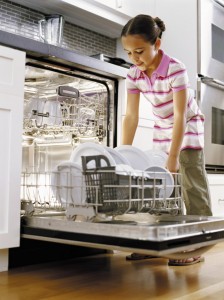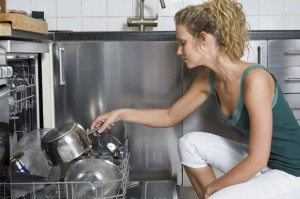How to avoid a dishwash disaster
 My brother-in-law sent an e-card to our family chat the other day: “Here’s to all of you who rearrange the dirty dishes in the dishwasher after someone else has loaded it.” My sister, mother and I are all guilty of this. Not because we are unappreciative when someone else loads the dishwasher, it is just that we have figured out that there are certain ways to load that work better than others.
My brother-in-law sent an e-card to our family chat the other day: “Here’s to all of you who rearrange the dirty dishes in the dishwasher after someone else has loaded it.” My sister, mother and I are all guilty of this. Not because we are unappreciative when someone else loads the dishwasher, it is just that we have figured out that there are certain ways to load that work better than others.
My husband and I always have operated under the rule that if one of us cooks, the other cleans. When it’s Scott’s night to load, I cannot help but reload when he’s done. He argues that it makes no difference, but when there are food bits left on the dishes, I have to argue otherwise. Here are some dos and don’ts for properly loading the dishwasher:
Do decide when you will run the clean cycle.
In general, skip the pre-rinse if you are going to run it right away. Otherwise, rinse and scrape food before loading. If you have a large amount of dishes, load them up and use the rinse cycle after loading.
Do keep the front free. Large pans or plates in the front of the dishwasher, especially on the bottom rack, will block the soap from reaching the dishes. Place large, flat pans and plates at the sides and back instead.
Do place plates on the bottom rack, in the slots. If they must lean, make sure they lean toward the middle and slightly downward.
Do refer to your manufacturer’s manual. If you didn’t save it, look it up online. This will outline the most efficient way to load your specific dishwasher.

Don’t buy in bulk. The good housekeeping rule of thumb: Purchase only what you will use within two months. Detergents are most effective when they are fresh. Store in a cool, dry place, such as the pantry rather than under the sink.
Don’t stack. The water spray, no matter how strong, will not reach all surfaces of stacked items, leaving the top items dirty.
Don’t forget the fragile. Delicate items like dessert plates, ceramic pieces and wine glasses shouldn’t be loaded with other items touching them, which can lead to breakage or chipping.
Don’t place all like utensils together. This will allow for the utensils to nest in one another, leaving much of the surfaces untouchable by the water spray. Instead, vary the utensils, and vary their placement (up and down).
Have a question or comment for Joanne? Email her at thefixisinhawaii@gmail.com.